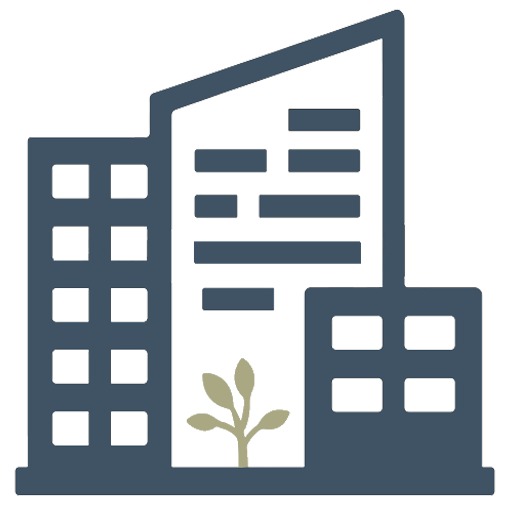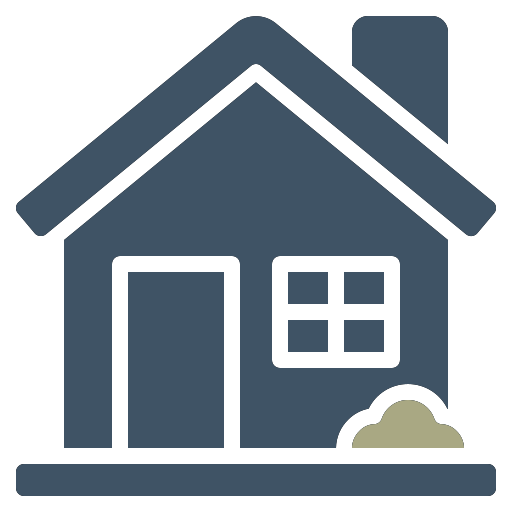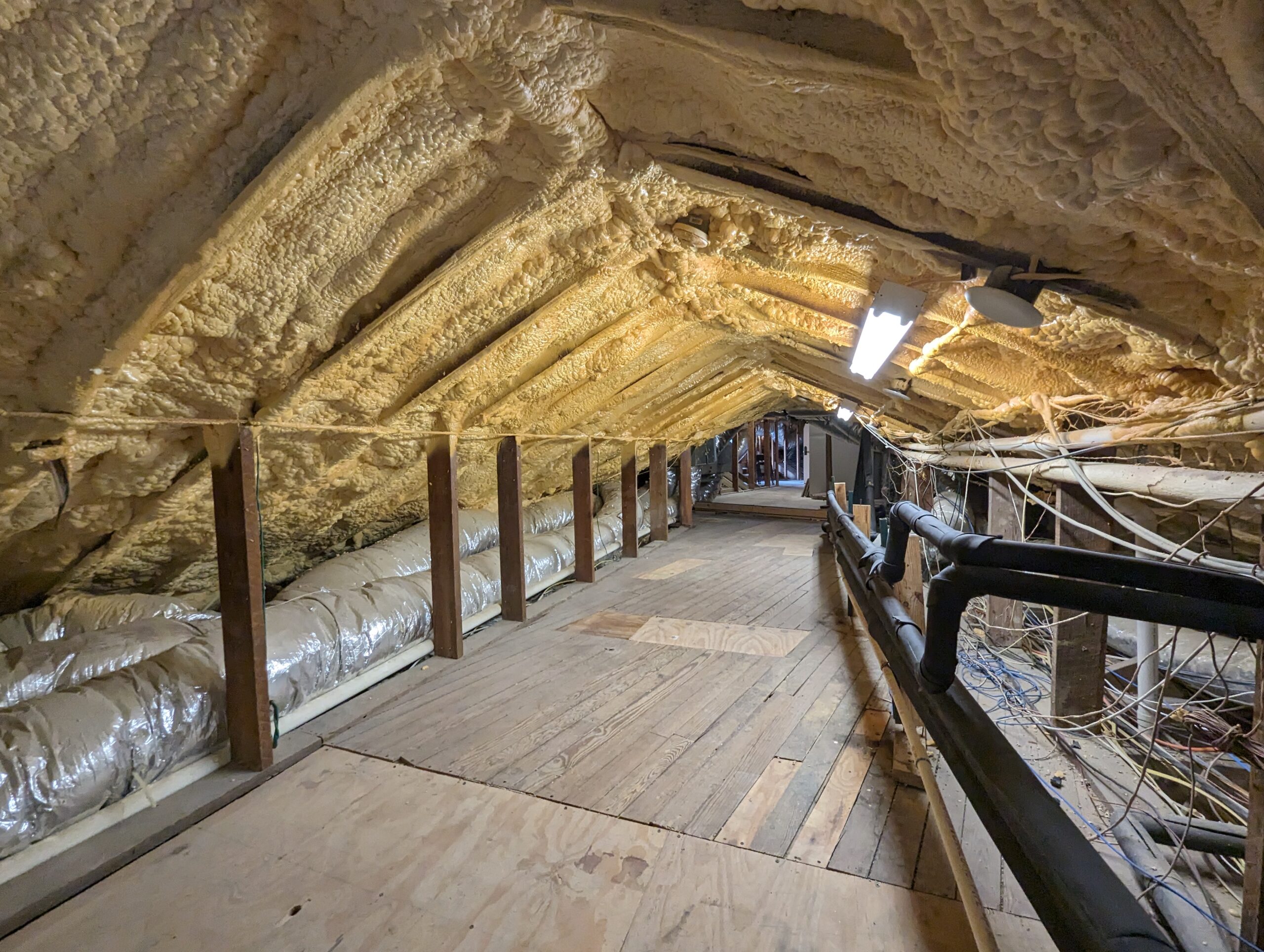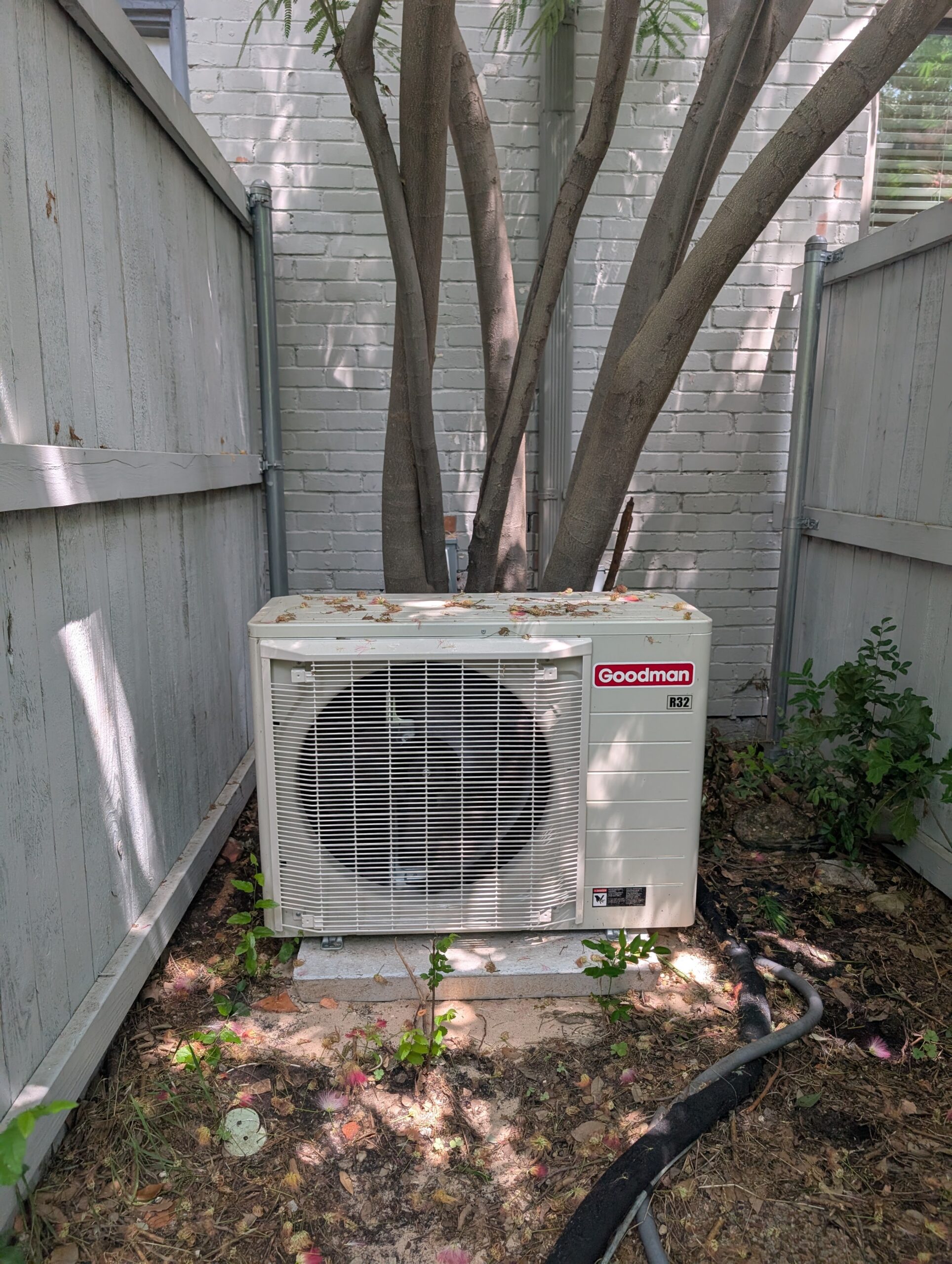For the eco-conscious homeowner in the Dallas-Fort Worth area, creating a sustainable living space is a top priority. While upgrading to a high-efficiency HVAC system is a significant step, it’s only one piece of the puzzle. Truficient Energy Solutions understands that true energy efficiency begins with a well-insulated home. You might be wondering why an HVAC company is so focused on insulation. The answer is simple: insulation and HVAC systems work hand-in-hand. Proper insulation significantly impacts your home’s comfort, energy efficiency, and ultimately, your utility bills. In this post, we’ll explore why insulation is crucial for your home and how it complements your HVAC system.
The Dynamic Duo: Insulation and HVAC
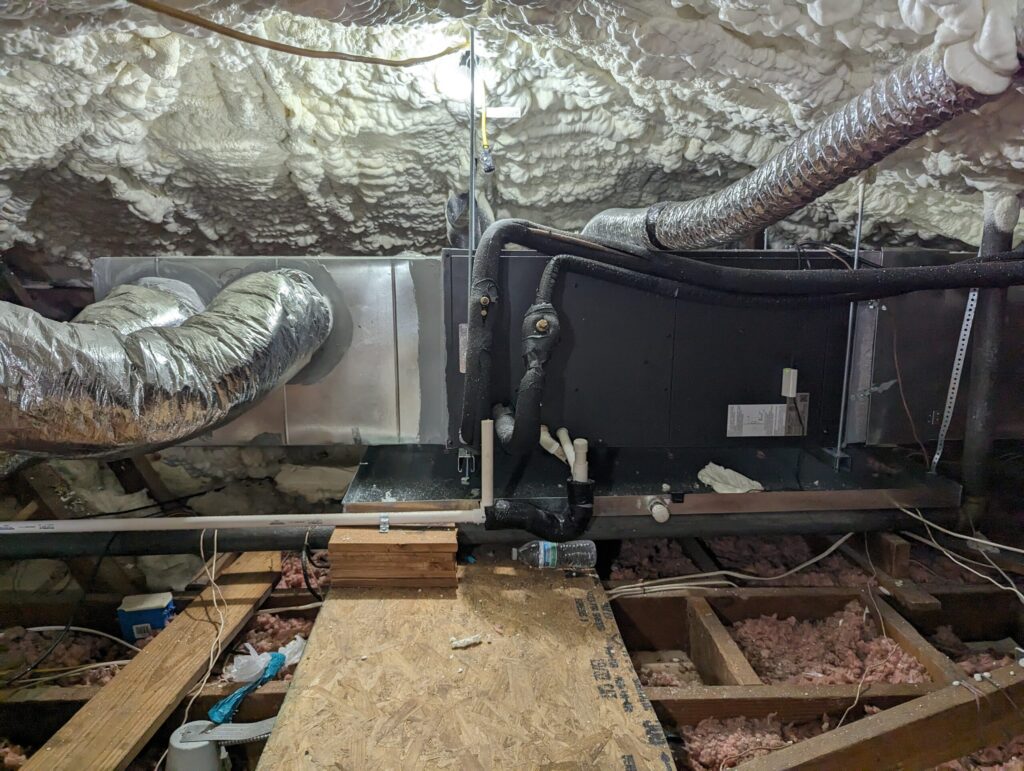
Imagine trying to cool your home with the windows open on a sweltering Texas summer day. Your AC unit would work overtime, consuming excessive energy and struggling to maintain a comfortable temperature. Poor insulation is like leaving those windows open. It allows heat to penetrate your home in the summer and escape in the winter, forcing your HVAC system to work harder and consume more energy.
- Insulation acts as a barrier: It resists the flow of heat, keeping your home cooler in the summer and warmer in the winter.
- A well-insulated home reduces the workload on your HVAC system: This translates to lower energy bills, reduced wear and tear on your equipment, and a smaller carbon footprint.
- Coupled with a high-efficiency HVAC system, insulation maximizes energy savings: It’s the most effective way to lower your energy consumption and create a truly sustainable home.
Attic Insulation: A Critical Component
Here in Texas, we experience extreme temperature swings throughout the year. Summer temperatures can soar above 100°F, pushing attic temperatures even higher, sometimes reaching 150°F. Conversely, winter temperatures can plummet to near freezing, creating the potential for burst pipes and other issues. These drastic fluctuations put immense stress on your home’s systems, including your HVAC equipment.

Proper attic insulation can mitigate these extremes:
- Regulates attic temperature: Aiming for an attic temperature of 70-75°F in the summer and the high 70s in the winter reduces stress on everything stored in the attic, including lighting, electrical wiring, and personal belongings.
- Reduces stress on mechanical equipment: By maintaining a more stable temperature, insulation reduces the workload on your HVAC system, prolonging its lifespan.
- Protects stored items: Fluctuating temperatures can damage stored items. Insulation helps create a more stable environment, preserving their condition.
Choosing the Right Insulation
Several types of insulation are available, each with its own benefits and applications. For optimal attic insulation in Texas, two primary options stand out:
- Spray Foam: This is often the superior option, creating an airtight seal that significantly reduces heat transfer. We will discuss the different types of spray foam in later posts.
- Blown-in Fiberglass: A more traditional and cost-effective option. For Texas climates, aiming for an R-value of R-40 is recommended.
Before installing blown-in fiberglass, it’s crucial to air seal all ductwork. This prevents air loss into the attic and prevents contaminated attic air from being drawn into the ductwork and distributed throughout your home.
The Importance of Duct Insulation
Even with a well-insulated attic, poorly insulated ductwork can significantly impact your home’s energy efficiency. In an unconditioned attic space, ductwork can be exposed to extreme temperatures. Imagine 50-55°F air traveling through ductwork in a 130°F attic. The temperature difference creates significant thermal gain, meaning the air loses its cooling capacity as it travels through the ducts.
- Thermal gain impacts air balancing: Temperature fluctuations along duct runs can lead to uneven temperatures throughout your home, creating hot and cold spots.
- Long duct runs exacerbate the problem: The longer the duct run, the more opportunity there is for thermal gain, further impacting air temperature and comfort.
- Proper duct insulation minimizes thermal gain: This ensures consistent temperatures throughout your home and maximizes the efficiency of your HVAC system.
Insulation in Older vs. Newer Homes
Insulation practices have evolved significantly over time. Older homes often have minimal or inadequate wall insulation, contributing to energy inefficiency. Newer homes, built with modern building codes, generally have much better insulation.
- Older Homes: Often lack sufficient wall insulation, leading to higher energy bills and less comfortable living spaces. Upgrading insulation in older homes can significantly improve energy efficiency.
- Newer Homes: Typically feature improved insulation in walls, attics, and floors, resulting in better energy performance. However, even newer homes can benefit from insulation upgrades, especially in the attic.
Insulation During Remodels
If you’re planning a home remodel, especially one involving siding replacement, it’s an excellent opportunity to improve your home’s insulation.
- External Wall Insulation: Consider adding foam board insulation to the exterior sheathing before installing new siding.
- Weather-Specific Installation: Ensure the installation method is appropriate for your specific climate.
- Rain Guard Protection: Adding a 1-inch nail plate over the foam board acts as a rain guard, protecting the insulation from moisture damage.
This approach adds a layer of insulation to your walls, significantly improving energy efficiency and creating a more comfortable living environment.
Truficient Energy Solutions: A Holistic Approach
At Truficient Energy Solutions, we take a holistic approach to home comfort and energy efficiency. We understand that insulation is just as important as your HVAC system. By addressing both aspects, we can help you create a truly sustainable and comfortable home.
- Systemic Evaluation: We assess your home as a complete system, considering all factors that impact energy efficiency, including insulation, ductwork, and HVAC equipment.
- Tailored Solutions: We recommend customized solutions based on your specific needs and budget.
- Expert Installation: Our experienced technicians ensure proper installation of all insulation and HVAC systems.
By partnering with Truficient Energy Solutions, you’re not just getting an HVAC contractor; you’re gaining a partner in creating a more sustainable and comfortable home. We proudly serve the Dallas, Richardson, and Mesquite, Texas areas. Contact us today to learn more about how we can help you optimize your home’s energy efficiency.

